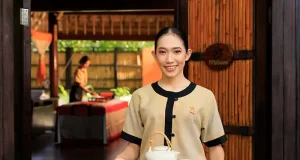Tucked into the southeastern edge of New Zealand’s Banks Peninsula, Pōhatu (Flea Bay) feels lost in time. Only accessible from a steep, winding dirt road spanning volcanic hills and patchworked farmland, the valley abruptly opens up to a rugged coastal inlet of the South Pacific. There’s no hum of modern life here, just subtle waves, rustling flax, and the ongoing bleat of sheep. This isolation has made Pōhatu both fragile and critical—as it’s home to one of the largest mainland colonies of kororā, or little blue penguins, in all of Aotearoa.
In the 19th century, French whalers tried to establish a foothold here, negotiating with local Māori. But before they could formalize it, the British intervened, ultimately signing the Treaty of Waitangi and cementing their claim. The French influence lingered, though, shaping a complex national identity shaped by Indigenous roots and colonial legacies.
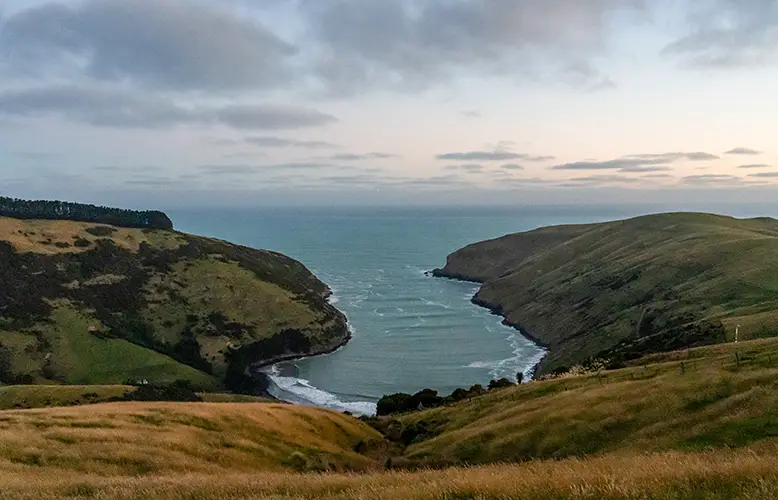
More recently, the 2011 Christchurch earthquake catalyzed another kind of change. In the wake of destruction, communities across the South Island—including those on Banks Peninsula—opened their doors to newcomers, eager to help rebuild and reimagine the region. Pōhatu was part of that shift. Today, it stands as a place of tension and transition—between old and new, wild and cultivated, remote and deeply connected. And in that balance lies something rare: a living example of how conservation and farming can not only coexist, but actively support each other.
At the center of the conservation efforts of Pōhatu are Francis and Shireen Helps, who, with their extended family, have transformed this secluded bay into a sanctuary for kororā, while still managing a full-scale sheep and cattle farm. Historically, Banks Peninsula was a densely forested, biodiverse landscape. But that changed quickly when extensive logging and agricultural development reduced native vegetation to less than 1% by the late 20th century.
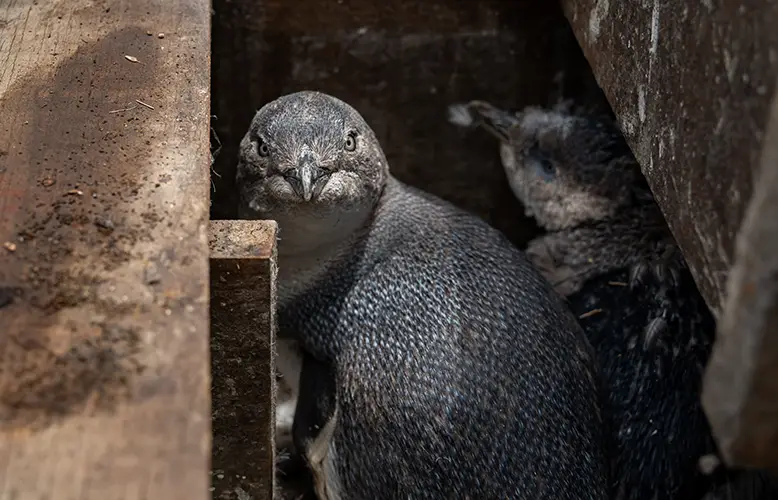
In 1996, the Helps family began replanting native bush across their property, setting a bold 50-year goal to restore 60% native cover across the peninsula’s eastern region. Today, that number is climbing—hovering around 40%, with 30% protected in covenants and reserves and another 10% forested. To expand their impact further, the Helps supported the launch of the Wildside Project—a collaborative conservation effort connecting neighboring landowners through the Banks Peninsula Conservation Trust (BPCT). This community-led nonprofit supports large-scale restoration through predator control, native planting, and public education. Its funding comes from a mix of donations and eco-tourism, including a three-day hiking trail that spans private land on this part of the peninsula.
After navigating a steep dirt road and frequent stops to open and close the numerous farm gates, we finally rolled into Pōhatu. And we were immediately greeted by a flock of the most “storybook” looking sheep we’d ever encountered. The Valais Blacknose, originally from Switzerland, are bred here in the valley. These fluffy and utterly charming sheep, with thick white fleece and striking black faces, were much more approachable than any livestock sheep we’ve encountered elsewhere.
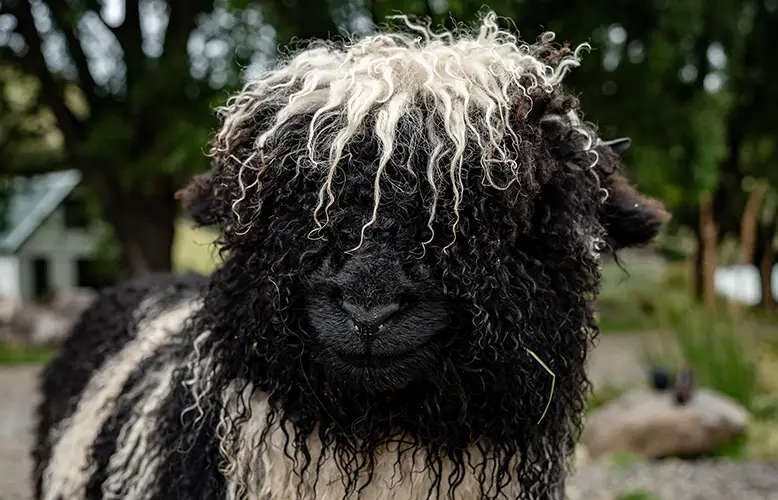
While undeniably adorable, these sheep are also part of a much bigger picture. Their fleece is warm as well as a functional carbon sink. An estimated 40–50% of atmospheric carbon can be stored in wool, meaning a wool carpet or chair covering can lock away carbon for years. The Helps family is exploring how to pair this natural fiber with eco-plastics or compostable materials, creating a circular product that’s both useful and climate-smart. Here, even these friendly faces were part of the conservation strategy.
Francis and Shireen welcomed us as one of their own and began walking us through the strategy behind every element of the farm—from paddock rotation to where each fence line sits. With 800 sheep and 30 cows, the Helps family manages the land with long-term resilience at the center. Rotational grazing, no herbicides or insecticides, and a focus on soil health allow native ecosystems to thrive alongside food production. Their soil is alive—rich in insects, worms, and methane-reducing bacteria like methanotrophs—making it a climate solution in its own right. As Francis put it, “The job of a farmer isn’t to fight nature, but to understand how all the pieces fit together and work with it.” The results are vibrant pastures, active wildlife corridors, and a landscape designed for both productivity and restoration.
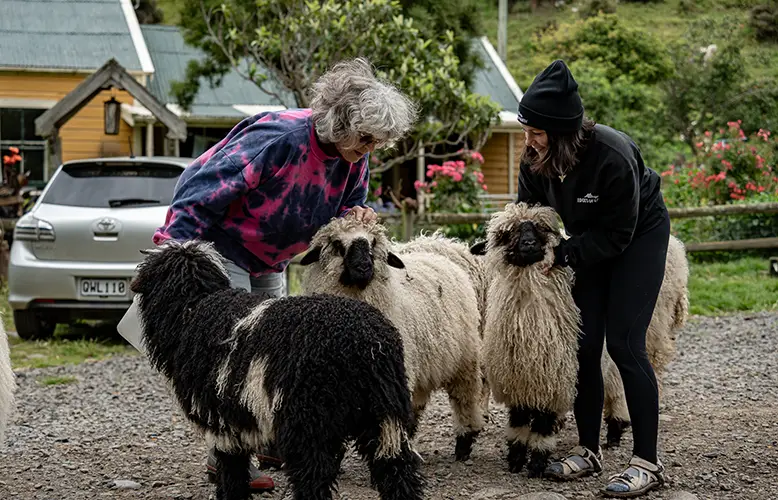
However, our time in Pōhatu involved another mission of our own: to see the kororā in their natural habitat. To do so, we’d need to adjust to their schedule. These little blue penguins spend the day out to sea and return to shore just after dusk. So, as the sun dropped behind the hills, we quietly slipped out of the farmhouse and followed narrow tracks toward the cliffs. Guided by the expert team at Pōhatu Penguins—conservation and eco-tourism pros who’ve spent years protecting the colony as part of the Helps vision—we waited in near silence, scanning the darkened coastline for the telltale shuffle of returning birds.
The first night resulted in nothing. Just heavy winds, harder than usual surf, and the distant rustle of sheep. But just before dawn, we were jolted awake by a series of sharp, guttural screeches. It was a sound unlike anything we’d heard before. For a split second, it sounded like a creature in distress—maybe a predator had found its way to the nests. But this turned out to be a rather ordinary call made by the penguins, their primal voices cutting through the stillness as they made their way back to sea to begin another day of work.
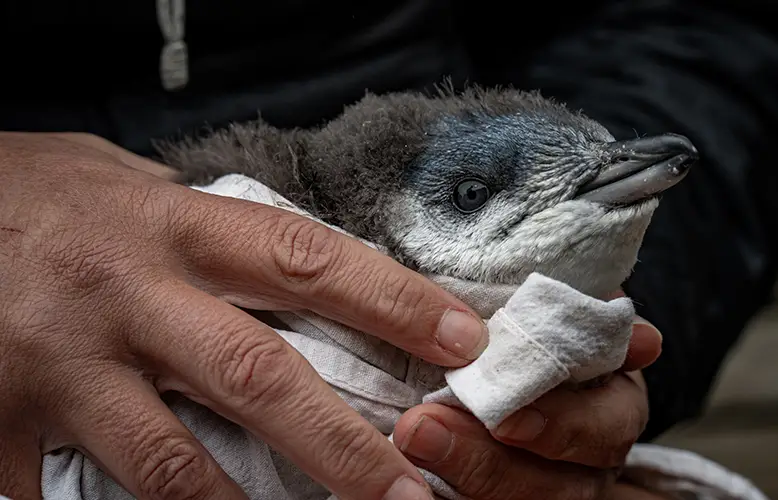
Kororā are the smallest penguin species on Earth, standing around 30-35 centimeters tall and weighing around a kilogram. Native to New Zealand and parts of southern Australia, they’re instantly recognizable—indigo-blue feathers, paddle-like wings built for underwater speed, and a famously awkward waddle on land. Though they spend the majority of their lives at sea, they return annually to the same coastal sites to breed and molt, making land-based protection essential to their survival.
At Pōhatu, these penguins burrow into clay hillsides, nest under dense vegetation, or settle into wooden boxes placed by the conservation team. Their lives follow a strict seasonal rhythm: in winter, males scout and prep burrows, calling for mates with raspy calls that echo through the valley. If a female approves of the nest, they’ll pair up and co-parent their chicks—sharing incubation and feeding, often raising only one clutch per season. But partnerships are performance-based. If a male slacks off, he may find himself replaced.
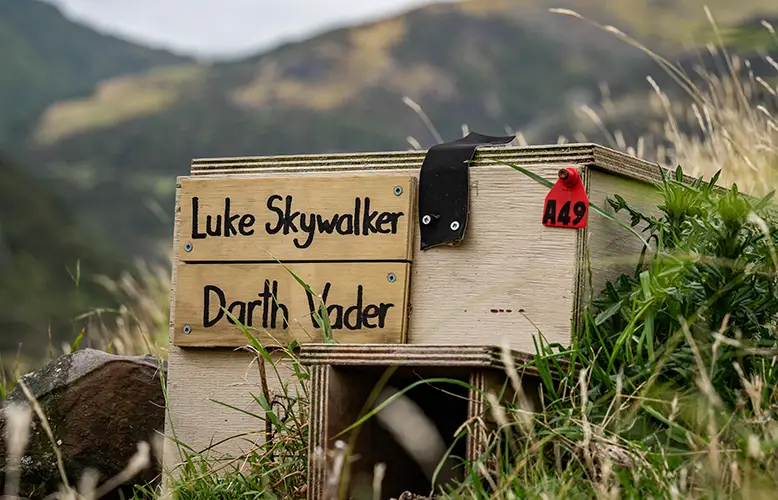
While their story is captivating, it’s also increasingly precarious. Historically, New Zealand’s native birds evolved in a world without mammalian predators. The arrival of invasive species—first on ships, later introduced intentionally—has simply wreaked havoc. As ground-nesters, kororā are easy targets for introduced predators like stoats, ferrets, rats, dogs, and feral cats. And as a result, their population has plummeted. In many parts of New Zealand. Because of this, the Pōhatu team deploys scent-based lures and hundreds of strategically placed traps to keep populations in check. Once facing an 85% population decline, the colony is now rebounding, all because a family paid attention to the strange sounds echoing outside their home and decided to take action.
That first chorus of screeches launched what would become one of Aotearoa’s most hands-on recovery efforts for little blue penguins. After realizing the scale of the colony on their property and how much data was going undocumented, the Helps family partnered with penguin biologist, Dr. Rachel Hickcox, to monitor and protect them. Today, more than 700 penguins are microchipped, and over 230 nest boxes are tracked across the property. This monitoring generates key data on chick development, breeding success, and molting cycles—insights now informing regional conservation work.
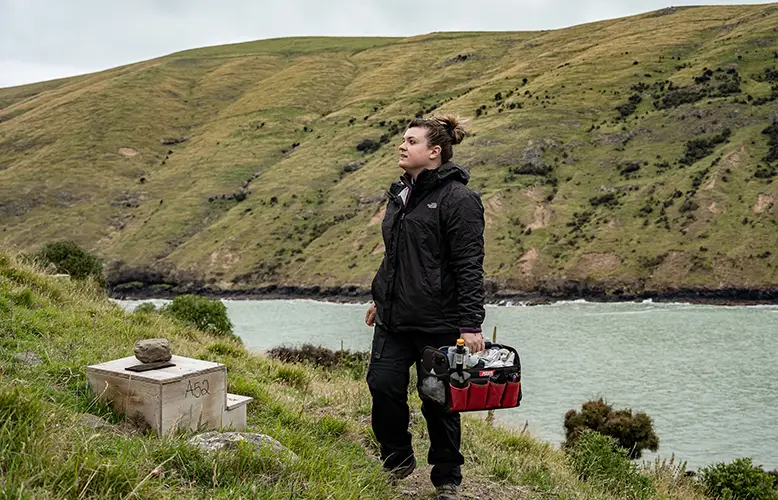
When monitoring began in 2000, there were just 717 known nests in the bay. By 2012, that number had grown to over 1,300. Today, roughly 70% of the area’s kororā nest on Helps family land, with the rest scattered across adjacent, less-managed terrain. That growth didn’t happen by chance—it’s the result of decades of trap-setting, habitat rehabilitation, and hands-on science, much of it powered by volunteers and the local community. In 2024 alone, 160 chicks were recorded in the monitored colony—each one a small but meaningful win. A few of the underweight chicks received extra care through a small onsite rehabilitation effort, rehydrated and hand-fed just enough to give them a stronger start before heading out to sea. The aim is always to keep them wild, but also to give them a fighting chance.
Even so, these gains remain fragile. Chicks need to reach at least 800 grams before fledging to stand a real shot at surviving at sea, and in recent years, increasingly erratic ocean conditions—fueled by back-to-back El Niño and La Niña cycles—have disrupted food availability. In 2022, more than 100 penguins died during a single mass starvation event, with losses continuing in the years that would follow. These casualties point to larger shifts in ocean health, but with little focused research on New Zealand’s six penguin species, many of the most pressing questions still remain unanswered.
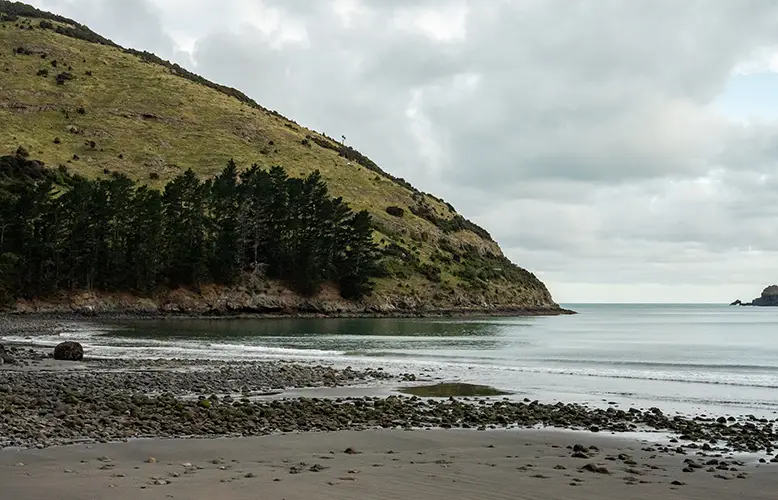
Pōhatu is proof that conservation can be much more than just theory. On the rugged edge of Banks Peninsula, conservation means muddy boots, headlamps at dusk, sheep at your side, and penguin calls in the dark. It’s a family giving land back to nature, bit by bit, while still making a living from it. Francis and Shireen Helps weren’t set out to lead a multi-dimensional conservation effort initially. They just noticed what was happening around them, and chose to act.
Their efforts show up as a working farm that supports biodiversity, a business that funds restoration, and a place where penguins are making a comeback. Pōhatu proves just what’s possible when we stop choosing sides between economy and ecology, and start living alongside our natural world.





